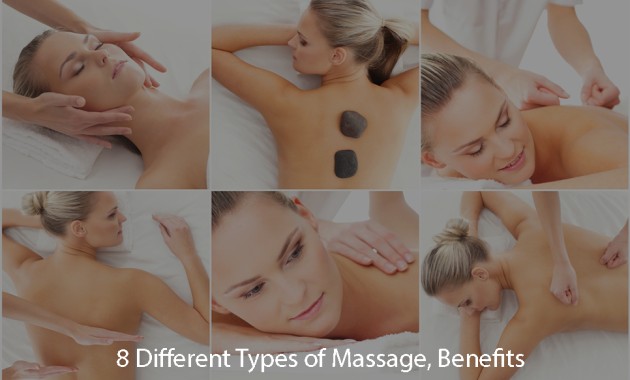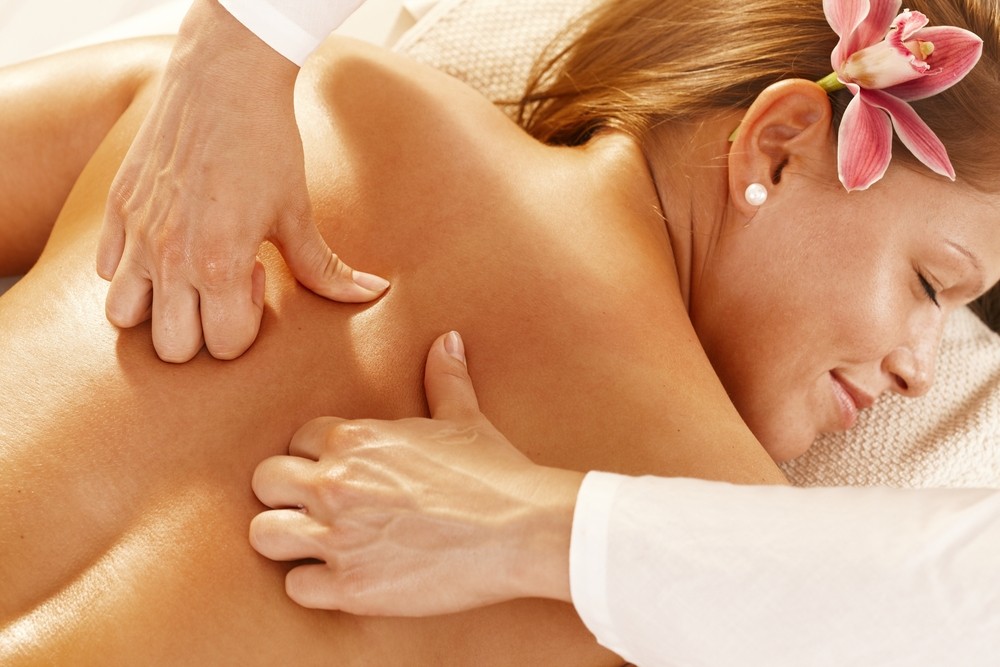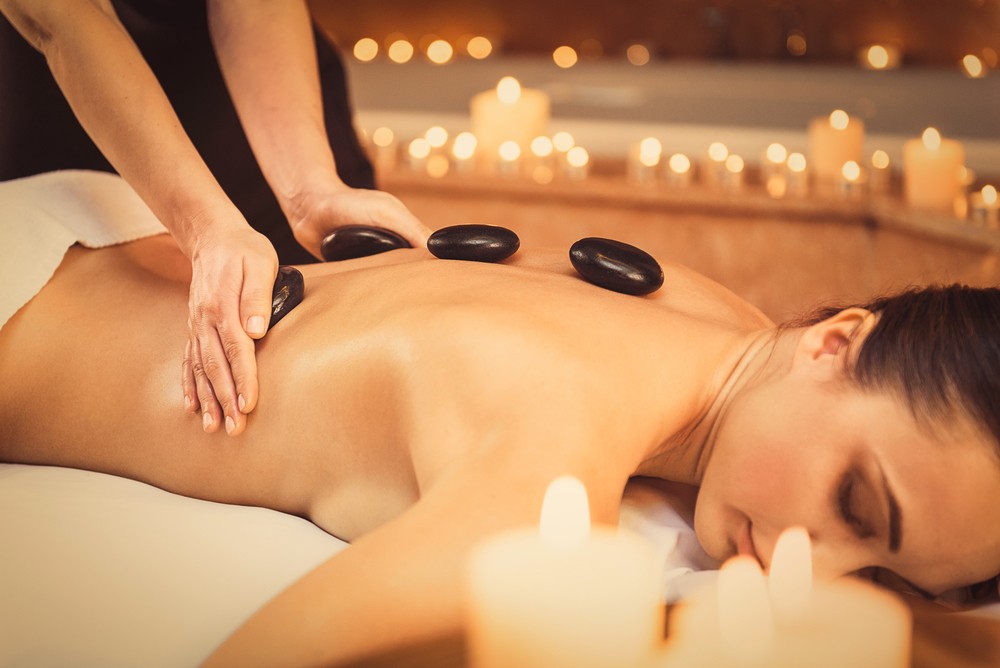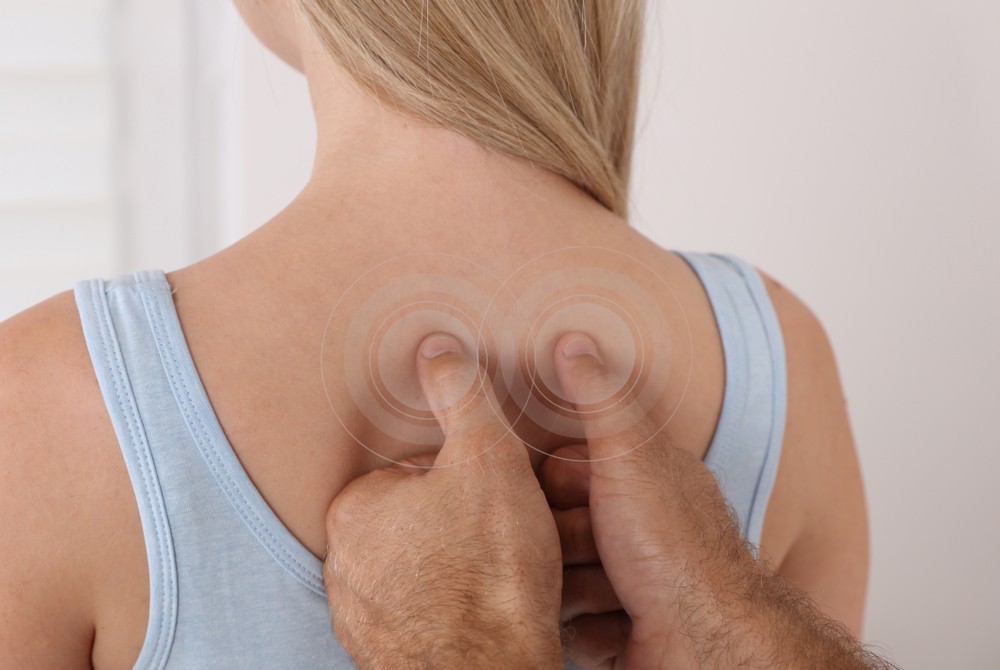A massage center is a facility where individuals can go to receive various types of massages, such as Swedish, deep tissue, or sports massage. Massages can have many benefits, including reducing stress and anxiety, improving circulation, and relieving muscle tension and pain.
There are many different types of massage, each with its own set of techniques and intended benefits. Some of the most common types include:
Swedish Massage
Swedish massage is a popular and relaxing type of massage that uses long strokes, kneading, and circular movements to promote relaxation and improve circulation. It is one of the most common types of massage and is typically performed using light to medium pressure.
Benefits of Swedish massage include:
- Stress relief: Swedish massage can help reduce stress and anxiety by promoting relaxation and reducing muscle tension.
- Improved circulation: The long strokes and kneading movements used in Swedish massage can help improve blood flow and oxygen delivery to the muscles, promoting overall health and well-being.
- Pain relief: Swedish massage can help alleviate muscle tension and pain, especially in the back, neck, and shoulders.
- Relaxation: Swedish massage can help you feel more relaxed and refreshed, both physically and mentally.
Some Common Questions About Swedish Massage Include:
- Is Swedish massage suitable for everyone?
- Swedish massage is generally considered safe for most people. However, if you have certain medical conditions such as blood clots, cancer, or osteoporosis, you should consult with your doctor before getting a massage. Pregnant women should also consult with their doctor before getting a massage
- How often should I get a Swedish massage?
- The frequency of your massages will depend on your individual needs and preferences. Some people may benefit from a massage once a week, while others may only need a massage every few months.
- What should I expect during a Swedish massage session?
- During a Swedish massage, you will typically lie on a massage table while the therapist uses long strokes, kneading, and circular movements to massage your muscles. You will be covered with a sheet and blanket, and only the area being worked on will be uncovered. You will likely be asked to undress to your level of comfort and the therapist will use oils or lotions to help with the massage.
- How will I feel after a Swedish massage?
- After a Swedish massage, you will likely feel relaxed and refreshed. Some people may feel a little sore the next day, especially if the massage was deep and focused on a specific area. This is normal and should subside within a day or two.
Deep Tissue Massage
Deep tissue massage is a type of massage that targets the deeper layers of muscle and connective tissue to relieve chronic pain and tension. It is typically performed using firm pressure and slower strokes than Swedish massage.
Benefits of Deep Tissue Massage Include:
- Pain relief: Deep tissue massage can help alleviate chronic pain in the back, neck, shoulders, and other areas of the body.
- Improved flexibility and range of motion: The deep pressure used in a deep tissue massage can help stretch and loosen tight muscles, improving flexibility and range of motion.
- Reduced muscle tension: Deep tissue massage can help reduce muscle tension and soreness, promoting relaxation and overall well-being.
- Improved posture: By releasing tension in the muscles, deep tissue massage can help improve posture and alignment.
Some Common Questions About Deep Tissue Massage Include:
- Is deep tissue massage suitable for everyone?
- Deep tissue massage is generally considered safe for most people, but it may not be appropriate for those with certain medical conditions, such as blood clots, osteoporosis, or certain types of cancer. It’s always recommended to consult with your doctor before getting a deep tissue massage
- How often should I get a deep tissue massage?
- The frequency of your massages will depend on your individual needs and preferences. Some people may benefit from a deep tissue massage once a week, while others may only need a massage every few months.
- What should I expect during a deep tissue massage session?
- During a deep tissue massage, you will typically lie on a massage table while the therapist uses firm pressure and slow strokes to massage the deeper layers of muscle and connective tissue. You will be covered with a sheet and blanket, and only the area being worked on will be uncovered. You will likely be asked to undress to your level of comfort and the therapist will use oils or lotions to help with the massage.
- How will I feel after a deep tissue massage?
- After a deep tissue massage, you may feel sore or tender in the areas that were worked on. This is normal and should subside within a day or two. You may also feel more relaxed and refreshed overall.
- Will it be painful?
- Some discomfort during the massage is normal, but the therapist should always work within your comfort level. If you feel pain during the massage, it’s important to communicate this to your therapist, who can adjust the pressure accordingly.
Sports Massage
Sports massage is a type of massage tailored to athletes and active individuals to help prevent injury, enhance performance, and promote recovery. It is typically performed using a variety of techniques, such as deep tissue massage, stretching, and trigger point therapy, to target specific areas of the body that are commonly affected by physical activity.
Benefits of Sports Massage Include:
- Injury prevention: Sports massage can help prevent injuries by identifying and addressing areas of tension and weakness before they become a problem.
- Improved performance: Sports massage can help improve athletic performance by promoting flexibility, range of motion, and endurance.
- Faster recovery: Sports massage can help reduce muscle soreness and inflammation, promoting faster recovery after intense physical activity.
- Reduced risk of injury: By reducing muscle tension and promoting flexibility, sports massage can help reduce the risk of injury.
Some Common Questions About Sports Massage Include:
- Who can benefit from sports massage?
- Sports massage is beneficial not only for athletes but also for anyone who engages in regular physical activity such as gym-goers, runners, or dancers.
- How often should I get a sports massage?
- The frequency of your sports massage will depend on your individual needs and preferences. Athletes may benefit from a sports massage before and after an event, while active individuals may benefit from a massage once a month.
- What should I expect during a sports massage session?
- During a sports massage, the therapist will use a variety of techniques, such as deep tissue massage, stretching, and trigger point therapy, to target specific areas of the body that are commonly affected by physical activity. You will be covered with a sheet and blanket, and only the area being worked on will be uncovered. You will likely be asked to undress to your level of comfort and the therapist will use oils or lotions to help with the massage.
- How will I feel after a sports massage?
- After a sports massage, you may feel sore or tender in the areas that were worked on, but this is normal and should subside within a day or two. You may also feel more relaxed and refreshed overall.
- Will it be painful?
- Some discomfort during the massage is normal, but the therapist should always work within your comfort level. If you feel pain during the massage, it’s important to communicate this to your therapist, who can adjust the pressure accordingly.
Hot Stone Massage
Hot stone massage is a therapeutic technique in which smooth, heated stones are placed on specific points on the body to promote relaxation and deep muscle and tissue tension release. The heat from the stones helps to increase circulation, relieve pain and stiffness, and ease muscle tension.
During a hot stone massage, the therapist will use a combination of massage techniques and the heat from the stones to promote relaxation and release tension in the muscles. The therapist will typically start by placing the heated stones on specific points on the body, such as the back, hands, feet, and face. They will then use the stones as an extension of their hands to massage the muscles and tissues.
Benefits of Hot Stone Massage Include:
- Relief of muscle tension and pain
- Improved circulation
- Increased flexibility
- Stress relief
- Improved sleep
It is also useful for people suffering from fibromyalgia, arthritis, and other chronic pain conditions.
Frequently Asked Questions:
1. How hot are the stones?
The stones are typically heated to between 130 and 145 degrees Fahrenheit.
2. Will the massage be uncomfortable?
The heat from the stones can feel intense at first, but it should not be painful. The therapist will check in with you throughout the massage to ensure that the heat level is comfortable for you.
3. Is hot stone massage safe?
Hot stone massage is generally considered safe when performed by a trained and licensed massage therapist. However, it may not be appropriate for everyone, particularly those with certain medical conditions or allergies. It is important to let your therapist know if you have any medical concerns before the massage.
4. Will I be covered during the massage?
You will be covered with a sheet or towel during the massage, with only the areas being worked on exposed.
5. What should I wear during the massage?
It is recommended to wear loose and comfortable clothing.
It’s always important to communicate with your therapist about your preferences and any concerns you may have.
Trigger Point Massage:
Trigger point massage, also known as myofascial trigger point therapy, is a type of therapeutic massage that targets specific areas of muscle tension known as “trigger points.” These points can cause pain, discomfort, and limited range of motion in the muscles and surrounding tissues. The massage therapist applies pressure to these points with their hands, fingers, or tools such as a trigger point wand, to release the tension and pain.
During a trigger point massage, the therapist will use a combination of techniques, including compression, stretching, and friction to release the trigger points. They may also use oils or lotions to help the muscles relax and soften.
Benefits of Trigger Point Massage Include:
- Relief of muscle pain and tension
- Improved range of motion and flexibility
- Increased circulation
- Reduced stress and tension
- Improved posture
It is also useful for people suffering from chronic pain conditions such as fibromyalgia, tension headaches, and TMJ disorders.
Frequently Asked Questions:
1. How does the massage feel?
The massage therapist applies pressure to specific points, which can cause a sensation of pain or discomfort. However, the pressure should not be unbearable and the therapist will work within your comfort level.
2. How many sessions will I need?
The number of sessions needed will depend on the severity of the trigger points and the individual’s condition. Some people may notice improvement after one session, while others may need several sessions to see results.
3. Can trigger point massage be used for other conditions?
Trigger point massage can be used to relieve pain and tension in other areas of the body. It can be particularly beneficial for people suffering from chronic pain conditions such as fibromyalgia, tension headaches, and TMJ disorders.
4. How long does a session last?
A typical trigger point massage session lasts between 60 and 90 minutes.
5. Is it safe for everyone?
Trigger point massage is generally considered safe when performed by a trained and licensed massage therapist. However, it may not be appropriate for everyone, particularly those with certain medical conditions or allergies. It is important to let your therapist know if you have any medical concerns before the massage.
It is important to communicate with your therapist about your preferences and any concerns you may have. If you experience any pain or discomfort during the massage, be sure to let your therapist know, as the pressure and technique can be adjusted to suit your needs.
Shiatsu Massage:
Shiatsu massage is a type of therapeutic massage that originated in Japan. It is based on the principles of traditional Chinese medicine and uses finger pressure to stimulate specific points on the body, known as acupressure points. The therapist applies pressure to these points with their fingers, thumbs, and palms to release tension and pain in the muscles and surrounding tissues.
During a shiatsu massage, the therapist will use a combination of techniques, including compression, stretching, and rotational movements to release tension and pain in the muscles. The massage is typically performed on a mat on the floor, and the client remains fully clothed.
Benefits of Shiatsu Massage Include:
- Relief of muscle tension and pain
- Improved circulation
- Increased flexibility
- Stress relief
- Improved sleep
- Relief of symptoms of various conditions such as headaches, menstrual cramps, and lower back pain.
Frequently Asked Questions:
1. How does the massage feel?
Shiatsu massage can be intense, but it should not be unbearable. The therapist will work within your comfort level and adjust the pressure accordingly.
2. How many sessions will I need?
The number of sessions needed will depend on the individual’s condition and the severity of the symptoms. Some people may notice improvement after one session, while others may need several sessions to see results.
3. Can Shiatsu massage be used for other conditions?
Shiatsu massage can be used to relieve pain and tension in other areas of the body, and can be particularly beneficial for people suffering from headaches, menstrual cramps, and lower back pain.
4. How long does a session last?
A typical Shiatsu massage session lasts between 60 and 90 minutes.
5. Is it safe for everyone?
Shiatsu massage is generally considered safe when performed by a trained and licensed massage therapist. However, it may not be appropriate for everyone, particularly those with certain medical conditions or allergies. It is important to let your therapist know if you have any medical concerns before the massage.
It’s always important to communicate with your therapist about your preferences and any concerns you may have. If you experience any pain or discomfort during the massage, be sure to let your therapist know, as the pressure and technique can be adjusted to suit your needs.
Thai Massage
Thai massage is a type of therapeutic massage that originated in Thailand. It is a combination of yoga, acupressure, and reflexology, and is performed on a mat on the floor. The therapist uses their hands, feet, knees, and elbows to apply pressure to specific points on the body, known as acupressure points. They also use gentle stretches to release tension and pain in the muscles and surrounding tissues.
During a Thai massage, the therapist will use a combination of techniques, including compression, stretching, and rocking movements to release tension and pain in the muscles. The client remains fully clothed and should wear comfortable clothing that allows for movement.
Benefits of Thai Massage Include:
- Relief of muscle tension and pain
- Improved circulation
- Increased flexibility
- Stress relief
- Improved sleep
- Improved posture
Frequently Asked Questions:
1. How does the massage feel?
Thai massage can be intense, but it should not be unbearable. The therapist will work within your comfort level and adjust the pressure accordingly.
2. How many sessions will I need?
The number of sessions needed will depend on the individual’s condition and the severity of the symptoms. Some people may notice improvement after one session, while others may need several sessions to see results.
3. Can Thai massage be used for other conditions?
Thai massage can be used to relieve pain and tension in other areas of the body. It can also be beneficial for people suffering from chronic pain conditions, such as fibromyalgia, tension headaches, and TMJ disorders.
4. How long does a session last?
A typical Thai massage session lasts between 60 and 90 minutes.
5. Is it safe for everyone?
Thai massage is generally considered safe when performed by a trained and licensed massage therapist. However, it may not be appropriate for everyone, particularly those with certain medical conditions or allergies. It is important to let your therapist know if you have any medical concerns before the massage.
It’s always important to communicate with your therapist about your preferences and any concerns you may have. If you experience any pain or discomfort during the massage, be sure to let your therapist know, as the pressure and technique can be adjusted to suit your needs.
Aromatherapy Massage
Aromatherapy massage is a type of therapeutic massage that incorporates the use of essential oils. The essential oils are derived from plants and are believed to have healing properties. The therapist will add a few drops of the oil to a carrier oil, such as sweet almond oil, and then use it to massage the body.
During an aromatherapy massage, the therapist will use a combination of massage techniques and the essential oils to promote relaxation and release tension in the muscles. The massage is typically performed with the client fully clothed and lying on a massage table.
Benefits of Aromatherapy Massage Include:
- Relief of muscle tension and pain
- Improved circulation
- Increased flexibility
- Stress relief
- Improved sleep
- Improved mood
- Relief of symptoms of various conditions such as headaches, menstrual cramps, and lower back pain.
Frequently Asked Questions:
1. How does the massage feel?
An aromatherapy massage can be relaxing and soothing. The therapist will work within your comfort level and adjust the pressure accordingly.
2. How many sessions will I need?
The number of sessions needed will depend on the individual’s condition and the severity of the symptoms. Some people may notice improvement after one session, while others may need several sessions to see results.
3. Can aromatherapy massage be used for other conditions?
Aromatherapy massage can be used to relieve pain and tension in other areas of the body, and can be particularly beneficial for people suffering from headaches, menstrual cramps, and lower back pain.
4. How long does a session last?
A typical aromatherapy massage session lasts between 60 and 90 minutes.
5. Is it safe for everyone?
Aromatherapy massage is generally considered safe when performed by a trained and licensed massage therapist. However, it may not be appropriate for everyone, particularly those with certain medical conditions or allergies. It is important to let your therapist know if you have any medical concerns before the massage, also if you have any allergies to any of the essential oils.
It’s always important to communicate with your therapist about your preferences and any concerns you may have. If you experience any pain or discomfort during the massage, be sure to let your therapist know, as the pressure and technique can be adjusted to suit your needs. Also, if you have any specific preference of scent or if you have any allergies to any specific oils, be sure to inform your therapist before the massage.








